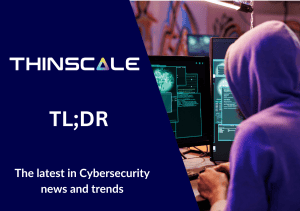Throughout 2024, the speed of digital transformation across every industry will continue at pace, demanding that security leaders stay agile, and remain open to new technologies and approaches.
Here are five key areas in particular that deserve attention:
1. Embedding Zero Trust
Let’s forget about the buzzword that Zero Trust Architecture (ZTA) has become. The central message is that perimeter-based security is no longer fit for purpose. The notion of implicit trust is finished. Instead, IT security must be built around continuous authentication, robust access controls, and always-on monitoring.
In the context of hybrid and remote working, a ZTA approach is essential to safeguard against both external and internal threats. As part of this transition away from the perimeter security model, security leaders will need to:
- Re-assess access policies and consider how they are enforced)
- Embed MFA throughout the system
- Implement identity management solutions
But perhaps the biggest challenge of all where ZTA is concerned is getting buy-in from all corners of the C-suite, as it’s something that will impact all stakeholders at every level of the organization. Microsoft have published a worthwhile framework for communicating the importance of ZTA.
2. Cloud Security Governance
Cloud services are revolutionizing operations, but they can also introduce complexities and expose organizations to new threat vectors. The Thales Cloud Security Study from 2023 noted that 39% of businesses reported a data breach in their cloud environments, up from 35% in 2022.
Security leaders must prioritize cloud security governance, ensuring the safety of sensitive data. This requires:
- Robust configuration management practices
- Implementing data encryption protocols
- Enforcing strict identity and access management controls
Additionally, regular audits and continuous monitoring of cloud environments will help to identify and remediate vulnerabilities proactively.
3. Leveraging AI and ML
This is another area where the level of hype surrounding it is almost off-putting. But with cyber threats growing in sophistication (and already leveraging it themselves), we need to seriously investigate the role that AI can play in strengthening our security posture.
In 2024, we’ll see more and more IT teams stepping up their usage of AI, and across organizations of all sizes. The question, as always with AI, is the degree to which it will supplement or replace human expertise. We foresee it being more of the former, the technology helping to detect threats and analyze patterns to help security teams respond quickly.
4. Privacy and Compliance Legislation
As data privacy regulations evolve, CISOs must stay vigilant. Understanding global privacy laws like GDPR, or CCPA is crucial, as well as staying up to date with PCI and HIPAA guidelines. Collaborating with legal and compliance teams to implement data protection measures and conducting regular privacy assessments ensures compliance. Prioritizing privacy not only mitigates legal risks but also builds trust with customers concerned about data handling.
5. Supply Chain Security & Risk Management
Businesses rely on intricate supply chains, fraught with potential security risks. For 2024, there must be more focus on supply chain security. That’s auditing partners, setting and enforcing security standards where possible, and contributing to chain-wide resilience against cyber threats. Security must also be at the forefront of vendor evaluation processes, with IT working alongside procurement teams to make the right choices.
ThinScale delivers a software-defined approach to workspace delivery, management, and security. Our light-touch solutions allows IT to enforce a zero-trust security posture across all devices, in any location.



